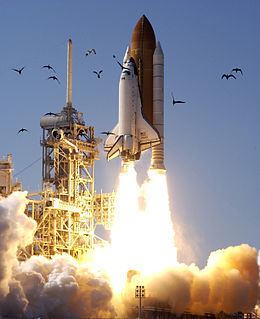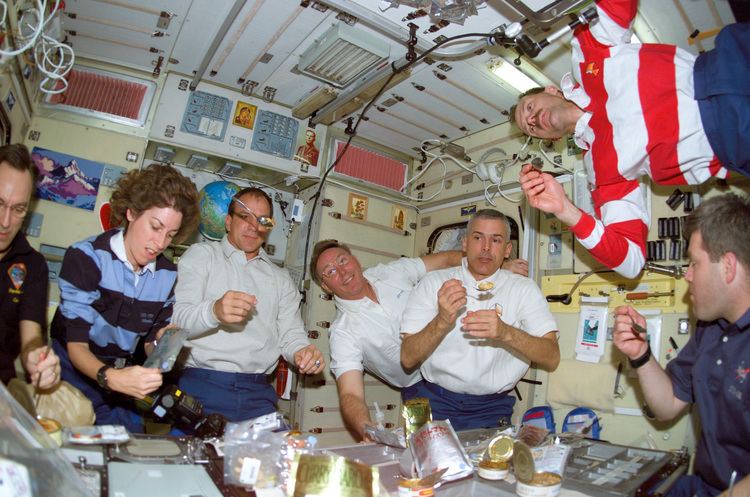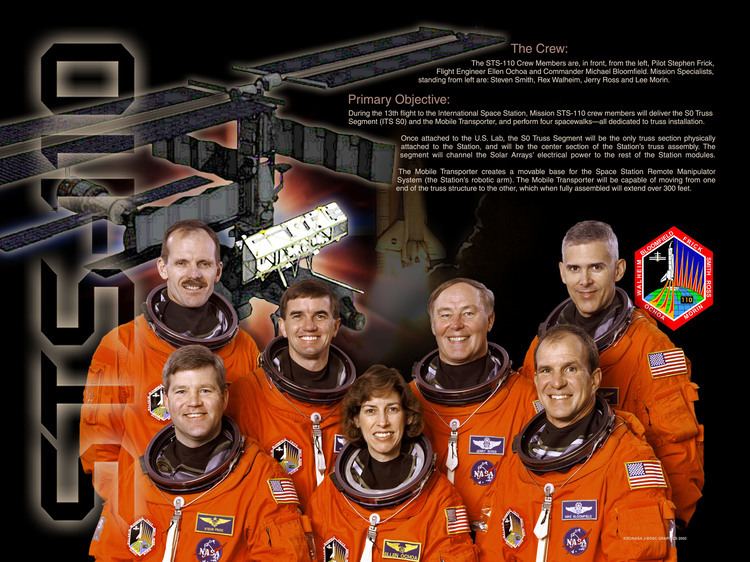Mission type ISS assembly SATCAT no. 27413 Period 1.5 hours Dates 8 Apr 2002 – 19 Apr 2002 Landing date 19 April 2002 | COSPAR ID 2002-018A Orbits completed 171 Apogee 225,000 m Launch date 8 April 2002 | |
Mission duration 10 days, 19 hours, 43 minutes, 38 seconds Distance travelled 7,240,000 kilometers (4,500,000 mi) Members Michael J. Bloomfield, Stephen Frick, Rex J. Walheim, Ellen Ochoa, Lee Morin, Jerry L. Ross, Steven Smith | ||
2002 space shuttle flight 109 sts 110 atlantis nasa
STS-110 was a Space Shuttle mission to the International Space Station (ISS) on 8–19 April 2002 flown by Space Shuttle Atlantis. The main purpose was to install the S0 Truss segment, which forms the backbone of the truss structure on the station.
Contents
Mission highlights

The main purpose of STS-110 was to attach the S0 Truss segment to the International Space Station (ISS) to the Destiny Laboratory Module. It forms the backbone of the station to which the S1 and P1 truss segments were attached (on the following missions STS-112 and STS-113, respectively).

STS-110 also delivered the Mobile Transporter (MT), which is an 885 kilograms (1,951 lb) (1,950 lb) assembly that glides down rails on the station integrated trusses. The MT was designed and manufactured by Astro Aerospace in Carpinteria, CA. During the next shuttle mission, STS-111, the Mobile Base System (MBS) was mounted to the MT. This Mobile Servicing System (MSS) allows the Canadarm2 to travel down the length of the installed truss structure.
Flight Day 1: Launch

After a launch scrub on 4 April 2002 due to a hydrogen leak, Space Shuttle Atlantis successfully launched on 8 April 2002, from Launch Complex 39B. The countdown on 8 April encountered an unscheduled hold at the T-5 minute mark due to data dropouts in a backup Launch Processing System. The Launch Processing System team reloaded the required data and the countdown resumed. Liftoff occurred with 11 seconds remaining in the launch window.
STS-110 was the first shuttle mission to feature the upgrade Block II main engines, which featured an "improved fuel pump...a stronger integral shaft/disk, and more robust bearings". The intent of the upgrade was to increase the flight capacity of the engines, while increasing reliability and safety.
With the launch of Atlantis, mission specialist Jerry Ross became the first human to have traveled to space seven times.
